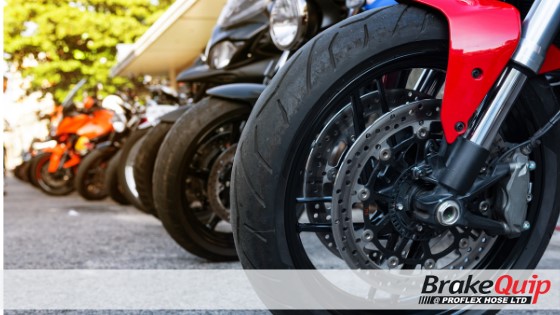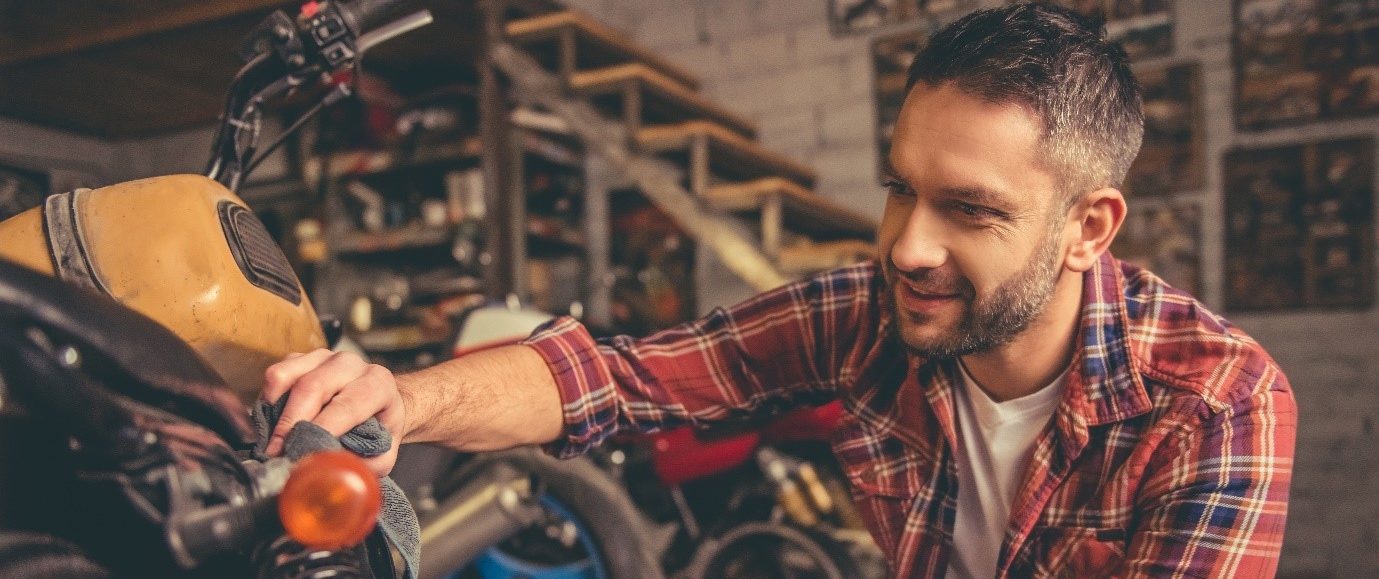There are several reasons why you may need to replace your motorcycle brake lines. Perhaps they have become worn and less effective over time or maybe you would just like to upgrade from the standard rubber variety to braided stainless steel. Either way, replacing your motorcycle brake lines can be an intimidating task – especially if you are a novice DIY mechanic!
In the following blog, we offer a step-by-step guide to replacing motorcycle brake hose, including some top tips on how to make the process simple and hassle-free. Follow the steps carefully and, if you have any questions, our team of experts – here at BrakeQuip – are always on hand to help.

A step-by-step guide to replacing motorcycle brake lines
- Check the length of your new brake lines
Before you begin the installation process, it is worth double-checking that your new brake lines are the correct length. The easiest way to do this is to compare them directly with the existing lines on your motorcycle, either by holding them alongside each other or cable-tying them together.
This may seem like an unnecessary step, but it is often worthwhile, and only takes a couple of extra minutes to complete. The last thing you want is to remove your brake lines, only to find that you don’t have a suitable replacement.
- Prepare for any mess
Replacing motorcycle brake lines is a messy job, even for the most skilful and experienced mechanic, and it is important to prepare for this. Be sure to cover painted bodywork before you start, thus protecting it against brake fluid damage, and wipe down the fuel tank, handlebars, and fluid reservoir. It is also worth putting a protective pan (or drip tray) under the calliper, and use a vacuum bleeder to drain away as much brake fluid as possible from the system.
- Remove existing brake line fittings
Once such checks and precautionary measures have been completed, it is time to go ahead and start the actual replacement process. You will first need to unscrew or unclasp any fasteners that are holding the current brake lines in place. Use a ratchet to remove all banjo bolts, wrapping each one in a rag to limit the amount of mess, and carefully feed the motorcycle brake line out of the chassis.
- Insert the new motorcycle brake line
Essentially, refitting a motorcycle brake hose involves retracing your steps and reversing the removal process. Feed the new brake line back into the chassis, following the exact same route as its predecessor, and ensure that each line is fitted to the correct calliper in the system.
- Replace and tighten the brake line fittings
The final step involves replacing the brake line fittings (e.g. washers, banjo bolts etc.) and securing them in place. It is important to take your time with this and, initially, you should only screw the fittings by hand – giving you the opportunity to check for any kinks or bends in the brake line.
Once satisfied that everything is correct, you can then tighten the brake line fittings using a torque wrench and fasten them securely in place. Finish by attaching the new brake lines to the chassis.

Contact BrakeQuip for motorcycle brake lines
Replacing your motorcycle brakes lines can be tricky and it is often difficult to know which brake lines you need and how to install them. Hopefully our step-by-step guide will offer some assistance; however, if you need any further advice or guidance, please feel free to get in touch.
We currently stock a comprehensive selection of rubber brake hose and braided stainless steel brake lines, suitable for a motorcycle, and our team of experts demonstrate a wealth of knowledge and experience in this area. Either call us today on 01257 220010 or send an email to sales@brakequip.co.uk and we will help you to successfully replace your motorcycle brake lines!


